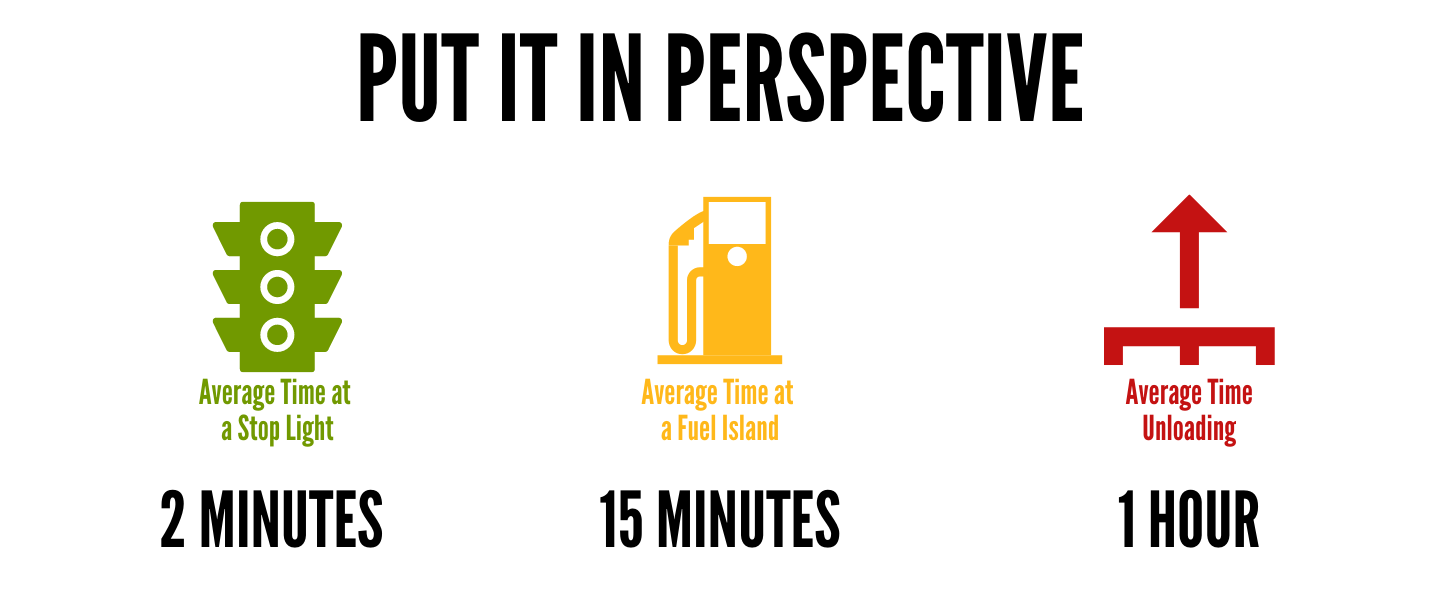Trucker Math: How Much Time is Really Lost Behind a Slow Vehicle

How often do you feel this way? You are making great time OTR, rolling along at 70 mph when you come up behind a slow car. Maybe there’s a construction zone in a couple miles, maybe your exit is coming up, or maybe someone is hanging out in your blindspot, and you can’t safely pass. You find yourself growing more and more frustrated at all the time you are wasting behind this vehicle. You may even find yourself creeping up on it a bit, following too closely to try and let the driver know how annoyed you are.
In order to help himself fight the urge to be upset or in a hurry, K&J driver John Hall decided to take a look at this scenario from a different perspective. He wondered how much time is actually lost vs how much time we think is lost. In order to figure it out, he got out his calculator and did the math.
What he found that the amount of time lost to a slow driver over a half hour period is negligible, and in most cases even less than the time lost at one stop light. Basically, it all evens out in the end.
How Much Time Is Lost Behind Slow Vehicles?
Say you are going 70 mph and want to pass a vehicle going 69 mph. Keep in mind your truck and trailer are approximately 70 feet long. That one mile-per-hour equates to 88 feet per minute that you would gain on the vehicle you are passing. If you have two miles or less to pass that vehicle, there isn’t enough time to pass it safely. In this case, the amount of time lost behind that vehicle is just 1.3 seconds.
If the vehicle you wanted to pass was going 65 mph, you would lose just 3.86 seconds per mile or 7.72 seconds over two miles. At that rate, you would only lose one full minute in 15.54 miles slowing down to stay behind that car.
Confused yet? Stay with us.

When there is heavy traffic, for example driving on I-80 through Iowa, it is difficult to pass and drivers have a tendency to tailgate out of frustration or a perceived sense of saving time. But again, John says, you don’t need to because the amount of time lost is insignificant.
Say you are back behind that vehicle going 65 mph when you want to be driving 70 mph. If you stay behind it for 5 minutes, you will lose 2220 feet of driving distance. That equates to only losing 21.6 seconds compared to if you had been going 70 mph. Even staying behind it for 15 minutes, would result in a loss of 1 min and 5 seconds. In 30 minutes you would lose 2 minutes and 10 seconds. And in one hour, you would lose 4 minutes and 19 seconds.

To put those time losses into perspective, the average amount of time at a stop light is 2 minutes, a fuel island is 15 minutes, and unloading is 1 hour. So, although it may seem much longer to you when you have to slow down behind another driver, it really doesn’t end up costing you much time overall.

John reiterates: “The point I'm trying to make here is that there are other things out of your control that can slow you down way more than a single car in front of you, so don't worry about it!”
Following too close, or dangerous passing just isn't worth it in the long run. The math checks out!
Speaking of math, are you tired of getting nickled and dimed by your current lease company? Click below and we will tell you more about our popular owner operator program.

